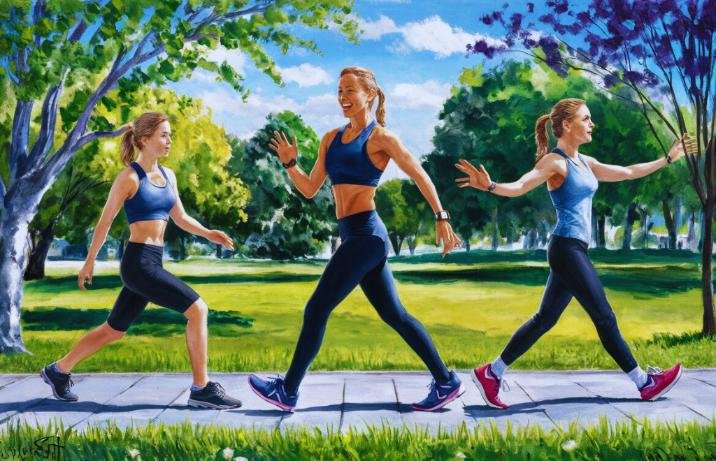One of the most underappreciated types of exercise is walking. Although it’s unlikely that you’ll be panting for air or completely soaked in perspiration, a good workout doesn’t require such things.
I love to keep things simple, put on my wrist one of the top fitness trackers, and go (I’ve logged 10,000 steps a day for the past year). However, the director of education at Balanced Body Joy Puleo offers three walking workouts that you might want to try if you need a little more guidance.
In a nutshell, walking is healthy for us, she claims. It can improve general strength, flexibility, and balance as well as good cardiorespiratory fitness. When done consistently, it all adds up and lays the groundwork for a healthy lifestyle.
Each of these three walking exercises is “designed to add intensity, challenge, and diversity to your walking routine,” and they are all brief enough to complete during your lunch hour.
How to Perform Walking Exercises by Joy Puleo
- Time intervals of Walking :
Walk at a leisurely pace for at least fifteen minutes.
Every two minutes, pick up the pace and walk faster for 20 to 30 seconds, then go back to your leisurely stroll.

Puleo advises, “Vary your pace by walking at a relaxed pace, followed by brief intervals where you increase your speed.” “This will improve overall cardiovascular health and test your cardio threshold.”
- Exercise moments
Take a 30-minute or longer walk.
Walk for 15 minutes at a time, followed by 15 bodyweight lunges and 15 bodyweight squats.

“A great way to mix up your routine is to incorporate bodyweight exercises like lunges, squats, and other calisthenics into your walks,” suggests Puleo. “Incorporating lower-body fitness activities can significantly enhance your strength development and aerobic capacity.”
- A rise or fall
Change your typical walking route to one that has greater incline and decline.
According to Puleo, this can also entail going up or down stairs.

Repeatedly walking the same path and over the same terrain has benefits, although Puleo notes that these may diminish as the body adjusts to and becomes accustomed to your pattern.
“Adding inclines and declines will raise your heart rate, keep your mind in sync with your body, and provide a new challenge and variation to your routine.” Walking on an uphill or descent will also test different muscular groups.
Advantages of strolling :
To be clear, you can enjoy the many health benefits of walking without engaging in a “walking workout.” Increasing your daily activity level in any way will probably be a good thing for your health.
“Just getting up from your chair and deciding to walk three to five times during the work week, and at least one day on the weekend, is the healthiest ‘walking workout,'” according to Puleo.
“The first and most crucial exercise technique is consistency. Simply resolve to go for a stroll and enjoy the outdoors, without worrying about going too quickly or too slow.

According to Puleo, there will be numerous advantages for both your body and mind if you can develop this practice.
One of the most significant and healthful things we can do for our long-term health, according to her, is to go for walks. It has been linked to longer lifespans, increased levels of physical activity, better control of diabetes, and a plethora of other chronic health conditions.
However, the psychological advantages might be the most significant. Breath control, reduced anxiety, reduced despair, and an enhanced sense of general wellness have all been linked to walking.
While walking by yourself might enhance your health and fitness, Puleo continues, she would always advise mixing up your workout routines to keep things exciting and engaging.
It’s a great idea to replace a day of walking with a leisurely bike ride. I would suggest strength training or an activity focused on muscular growth, in addition to a cardiorespiratory-based exercise.
“One essential component for general health and longevity is strength training. One method is to incorporate the fitness moments from the second workout above; another is to work out at home or at the gym with weights. However, Pilates and yoga can also help you gain more strength and flexibility and incorporate some mindfulness into your practice.













4 Responses